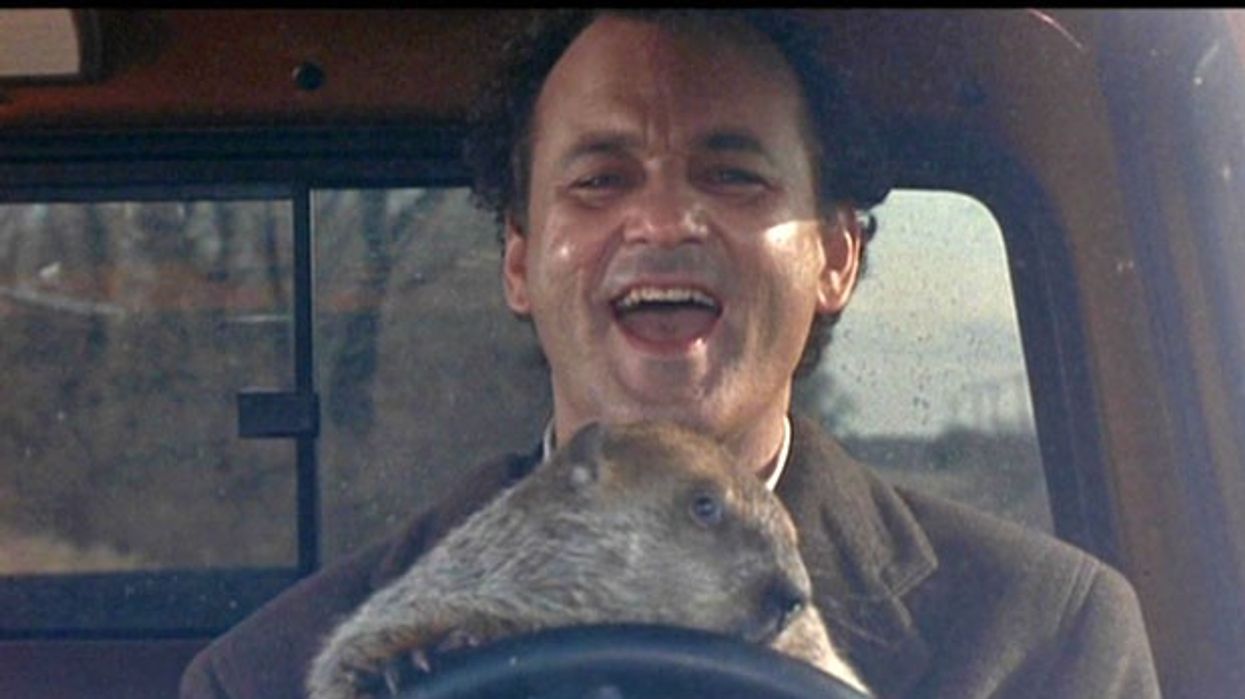'Groundhog Day': How a Script Everybody Loved but Nobody Would Produce Became a Comedy Classic
It's Groundhog Day. Again.

When screenwriter Danny Rubin sent out his original draft of Groundhog Day to the studios, he knew he hadn't written a conventional studio film. In fact, he hadn't even written a romantic comedy. "Everybody called me in for a meeting," said Rubin, "and nobody wanted to produce it. What they said to me was, 'I loved Groundhog Day. Of course, we can never make it.'"
After a lot of development and collaboration with Harold Ramis, Groundhog Day became the screenplay that ranks #3 on the Writers Guild of America's 101 funniest screenplays ever written.
Danny Rubin walked through his journey with the story, screenplay and film of Groundhog Day at the 2014 Austin Film Festival. Thanks to AFF's On Story, you can listen to Rubin break down his script and film. If you don't have time to watch now, after the video, I've highlighted some key points from Rubin's presentation.
Ramis Turned Rubin's Script into a Romantic Comedy
Rubin's original concept for Groundhog Day was not a romantic comedy, so his screenplay didn't follow the conventions of a rom-com. In fact, Rubin refers to his original screenplay as an experiment to see what it would be like for a guy to be stuck in a one-day time loop and discover how he would react to such a predicament. Ramis really liked Rubin's script, but recognized that the script needed to shift toward romantic comedy to get studio backing.
Rubin explains that once Ramis turned Groundhog Day into a romantic comedy, they needed to boost the role of Rita (Andie MacDowell) and develop her character more to make the film a two-hander. Moving to a more conventional genre of story to fit with studio expectations was a big shift for Rubin, but he explains how Ramis managed the relationship with the studio: "Harold shielded me a lot from the studio politics. At the same time, his sensibilities were very consistent with the way studios made comedy movies. So it wasn’t a big fight for him except for me."
Working Backwards to Find the Beginning
The draft of Rubin's script that Ramis originally read began in the middle of Phil's time stuck in the one-day loop. Rubin claims Ramis loved the idea of starting in the middle, but over the course of developing the script, Ramis' creative team realized they wanted to see Phil experience the beginning of the repetition. So, the screenplay kept creeping backward in time to find its beginning. Ultimately, the production draft started in the news van on the way to Punxsutawney, but even this wasn't early enough for the film. The opening sequence in the news station introducing Phil and Rita was added during reshoots to give the audience a true introduction to each character before the machinations of the time loop begin.
Less is More
Rubin really wanted the weight of how long Phil has been stuck in the time loop to hit the audience. He needed a device for Phil to mark time in a way that he could remember when the day continued to erase and repeat itself. Rubin's idea was to have Phil read one page of a book on the inn's bookshelf each day, then he would show Phil moving across the shelf, then down the shelves until Phil finally read the last page of the last book, and went all the way back to the beginning again.
The studio thought this was way too much time for Phil to spend stuck in the time loop. They only wanted Phil to be there for two weeks. Rubin credits Ramis with a simple idea to get around this issue with the studio. Ramis took out all overt references to exactly how long Phil was stuck, including Rubin's page-a-day bookshelf to mark time. As soon as the audience couldn't see exactly how long Phil was stuck, nobody cared anymore and the film opened up for interpretation to let audiences decide for themselves.
Listen to Ramis' Recollection
At the 2005 Austin Film Festival, Harold Ramis shared stories from his many films and collaborations, including Groundhog Day. You can check out this AFF On Story Podcast below to hear Ramis' recollection about how Groundhog Day eventually became the beloved comedy classic we know today.
Thanks to Austin Film Festival's On Story for both the TV and podcast episodes with Danny Rubin and Harold Ramis.
Source: Austin Film Festival's On Story











